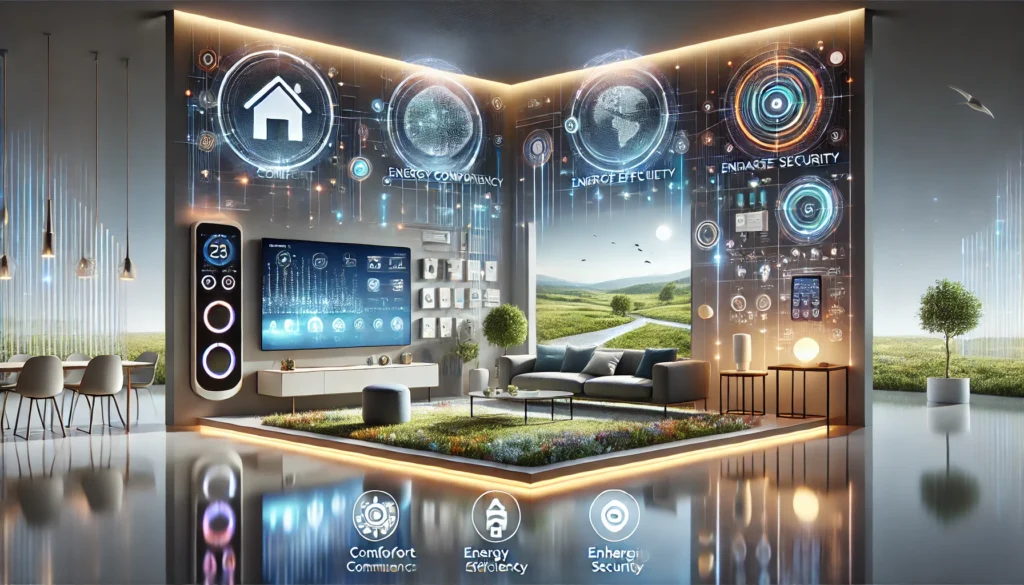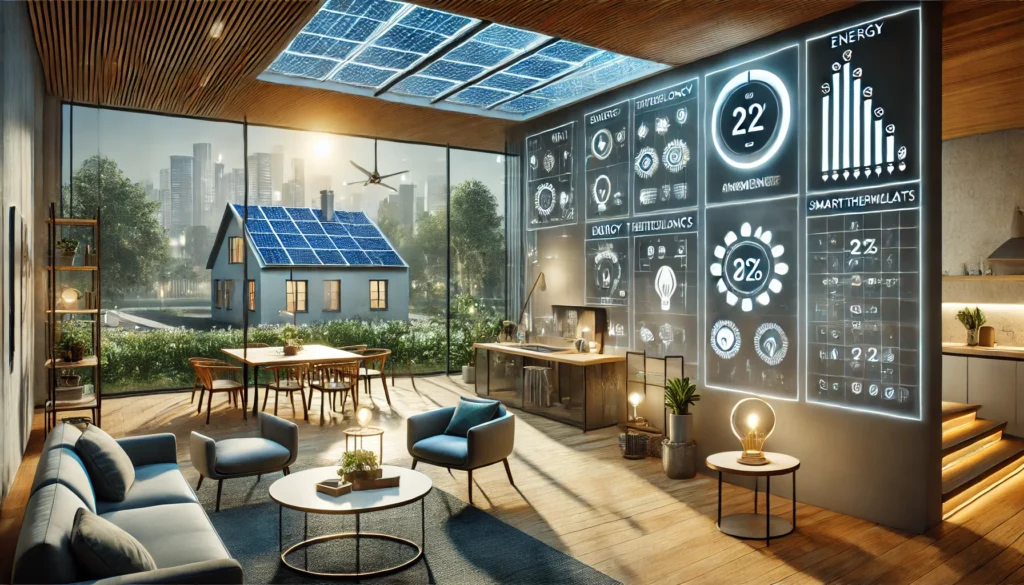Ambient technologies refer to advanced systems integrated into our surroundings to enhance comfort, improve energy efficiency, and create smarter living spaces. These technologies are designed to seamlessly interact with users, often without requiring direct control. The goal is to make environments more adaptive to the needs of the people within them.
For example, ambient technologies can include smart lighting, temperature control systems, and advanced home security features. These systems collect and adjust environmental data automatically to optimize comfort, energy usage, and convenience. They integrate naturally into daily life by offering passive support, often going unnoticed until needed.
Key Benefits of Ambient Technologies
Improved Comfort and Convenience
Ambient technologies enhance comfort by automatically adjusting environmental factors such as lighting, temperature, and air quality. Imagine a room where the lights dim at sunset, the temperature adjusts to your preference, and the air becomes fresher—all without your input. This passive yet highly effective approach to comfort can make a home or office feel more pleasant and livable.
Energy Efficiency
One of the major advantages of ambient technologies is energy savings. These systems ensure that resources are used efficiently by automating the control of lighting, heating, and cooling. For example, a smart thermostat can detect when a room is empty and adjust the temperature accordingly, reducing the energy wasted on cooling or heating unused spaces. Similarly, smart lighting can adjust brightness levels based on the time of day, ensuring no wasted energy.
Enhanced Security
Ambience technologies also offer security features, such as automated door locks, surveillance cameras, and motion sensors that detect movement within a building. These systems help provide peace of mind by monitoring your space even when you’re not around. With real-time alerts and automatic adjustments, ambient technologies are essential in maintaining a safe environment.
Seamless Integration
One of the most attractive aspects of ambient technologies is how well they integrate with existing infrastructure. These systems can often be installed with minimal disruption and work harmoniously with traditional devices. For instance, a smart home system can work alongside conventional electrical systems, providing an intelligent layer of automation without requiring complete replacements.

How Ambient Technologies Work
Sensor-Based Systems
Ambient technologies often rely on sensor-based systems that detect various environmental factors. These sensors can monitor temperature, humidity, motion, light, and air quality. Based on the data collected, the system makes real-time adjustments to optimize the space for comfort and efficiency.
For example, in a smart home, a sensor might detect a person’s presence in a room and adjust the lighting accordingly. It can also regulate the heating and cooling based on the room’s occupancy or time of day, ensuring energy is used efficiently.
Connectivity and Automation
The core of ambient technologies lies in their ability to connect to the internet and communicate with other devices. This connectivity allows for the automation of routine tasks and adjustments based on environmental data. A connected home system can integrate with other smart devices, such as smart speakers, to create a fully integrated environment where everything works together.
For example, a smart thermostat can sync with a weather app, adjusting the temperature based on the forecast for the day. Similarly, smart lighting systems can use motion sensors to automatically turn on lights when someone enters a room, reducing the need for manual control.
Machine Learning and AI
As ambient technologies evolve, they increasingly incorporate machine learning and artificial intelligence (AI) to predict and adapt to user behavior. These intelligent systems can learn from patterns and adjust environmental settings accordingly. Over time, they can make increasingly accurate decisions, fine-tuning comfort levels and energy consumption based on user preferences.
For example, a smart home system might learn when you usually return home from work and adjust the thermostat to your preferred temperature just before you arrive. This level of personalization makes ambient technologies even more effective at improving daily life.

Popular Examples of Ambient Technologies
Smart Thermostats
Smart thermostats are one of the most well-known examples of ambient technologies. These devices use sensors and data analysis to regulate your home’s temperature based on your habits. They learn when you’re home and away, adjusting the temperature accordingly to save energy. Additionally, they can be controlled remotely via smartphone apps, allowing you to make adjustments even when you’re not at home.
Smart Lighting Systems
Smart lighting systems are another great example of ambient technologies that enhance home environments. These systems use motion sensors and timers to adjust the lighting based on the time of day or room occupancy. They can also be controlled remotely via apps or voice commands, allowing for greater convenience and energy savings.
Voice-Activated Assistants
Voice-activated assistants, such as Amazon Alexa and Google Assistant, have become popular ambient technologies in homes and offices. These devices use AI to interpret voice commands, allowing users to control various smart devices in their environment, such as lighting, thermostats, and even security systems. They create a more hands-free experience and help make everyday tasks easier.
Automated Blinds and Curtains
Automated blinds and curtains are another example of ambient technologies that enhance comfort and convenience. These systems can adjust the amount of natural light entering a room based on the time of day or external conditions, such as the weather. They can also be controlled remotely or set on a timer, making it easy to ensure your home is always comfortable.
How Ambient Technologies Impact Energy Consumption
One of the most significant benefits of ambient technologies is their impact on energy consumption. By automating the regulation of temperature, lighting, and other environmental factors, these systems help reduce energy waste. For example, smart thermostats can adjust heating and cooling based on occupancy, ensuring energy is not wasted when rooms are unoccupied.
Moreover, many of these systems are designed to be highly efficient, using minimal power themselves. This focus on efficiency helps reduce overall energy usage, benefiting both the environment and your utility bills.
Additionally, many ambient technologies are compatible with renewable energy sources, such as solar panels, further enhancing their sustainability. For instance, smart lighting systems can be powered by solar energy, contributing to a greener and more sustainable way of living.

The Future of Ambient Technologies
The future of ambient technologies is bright, with ongoing innovations that promise even greater convenience, comfort, and energy efficiency improvements. As the Internet of Things (IoT) evolves, more devices will become interconnected, allowing for a fully integrated and intelligent living or working environment.
In addition, AI and machine learning advancements will enable ambient technologies to become even more personalized and responsive. These systems will be able to predict user behaviour more accurately and adapt to changing conditions in real time, providing an increasingly seamless experience.
Conclusion
Ambient technologies are changing how we live and work, offering smarter, more comfortable, and energy-efficient environments. By automating various aspects of our surroundings—such as lighting, temperature, and security—these systems create a more adaptive and personalized experience. As these technologies advance, they will become even more integrated into our daily lives, improving efficiency and overall comfort.
Incorporating ambient technologies into your home or office makes life more convenient and contributes to sustainability efforts by reducing energy consumption. As the future of ambient technologies unfolds, the possibilities for smarter living are endless.
FAQs About Ambient Technologies
1. What are ambient technologies?
Ambient technologies are advanced systems designed to enhance environments’ comfort, efficiency, and convenience through automation and intelligent control of various factors such as lighting, temperature, and security.
2. How do ambient technologies help with energy efficiency?
Ambient technologies optimize energy consumption by automatically adjusting temperature and lighting based on usage patterns and environmental conditions. This reduces waste and helps save energy.
3. Are ambient technologies difficult to install?
No, most ambience technologies are designed for easy installation and integration with existing systems. Many devices, such as smart thermostats and lights, can be set up quickly and are user-friendly.
4. How can ambient technologies improve comfort in a home?
Ambient technologies improve comfort by automating tasks like adjusting lighting, temperature, and air quality, making your home more responsive to your needs without requiring manual adjustments.
5. Will ambient technologies be more advanced in the future?
Yes, as AI and IoT continue to advance, ambience technologies will become more intelligent, personalized, and integrated, providing even greater levels of automation and efficiency in everyday life.
6. Are ambience technologies compatible with renewable energy?
Yes, many ambience technologies are designed to work with renewable energy sources, such as solar power, to enhance sustainability further and reduce energy costs.



